By Corey Sandler
Fall has come to New England, the most spectacular time of the year in a beautiful place. Last week included several quintessential autumn days, clear skies above red and yellow leaves along the blue harbor.
That was followed by three days in which we were encased in pea soup fog, a whiter shade of pale. I could not see the ocean from my window, although I knew it was still there.
And now, as I prepare this blog for publication on the first day of November, we’re back in the sun. But those of us who live here know that will change once more; winter is coming.
In offseason, there are two tall ships tied up in Boston harbor, including the USS Constitution, put into service in 1798 and still an active-duty U.S. Navy ship, venturing out into the harbor from time to time to show her colors. And there is the tall ship called Tall Ship–born as Caledonia in 1947–now moored in East Boston and consigned to less glorious use as a floating oyster bar and outdoor saloon.
The appeal of the tall ship is global, at least in nations that border on the sea. I have come across beautiful relics–and a few modern alternatives–in many far corners.
Here are a few more from my collection.
India’s Wave
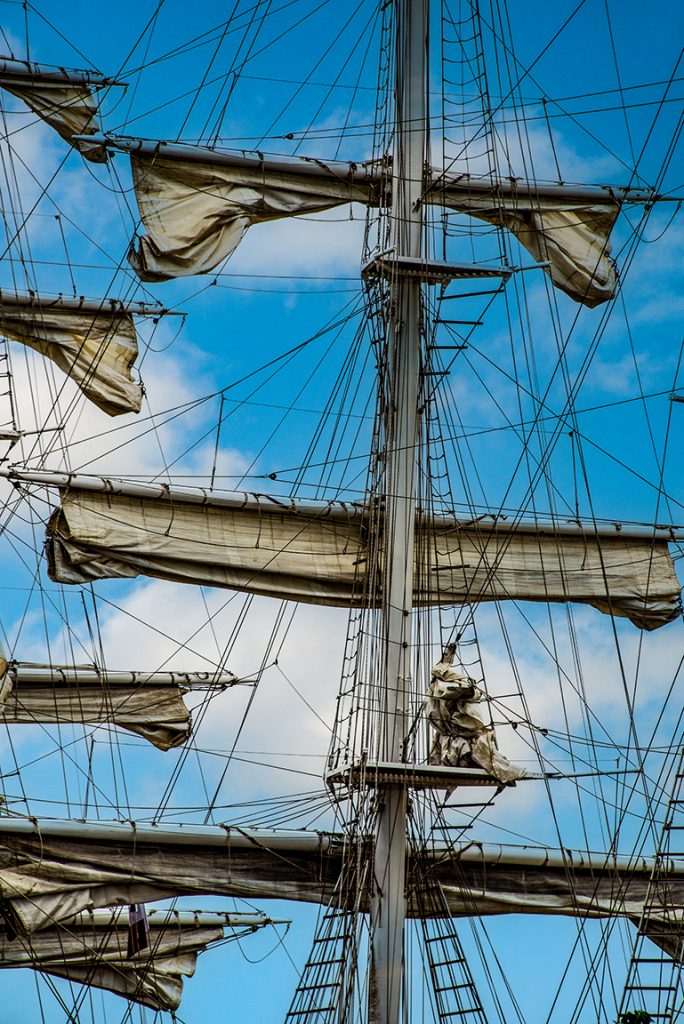
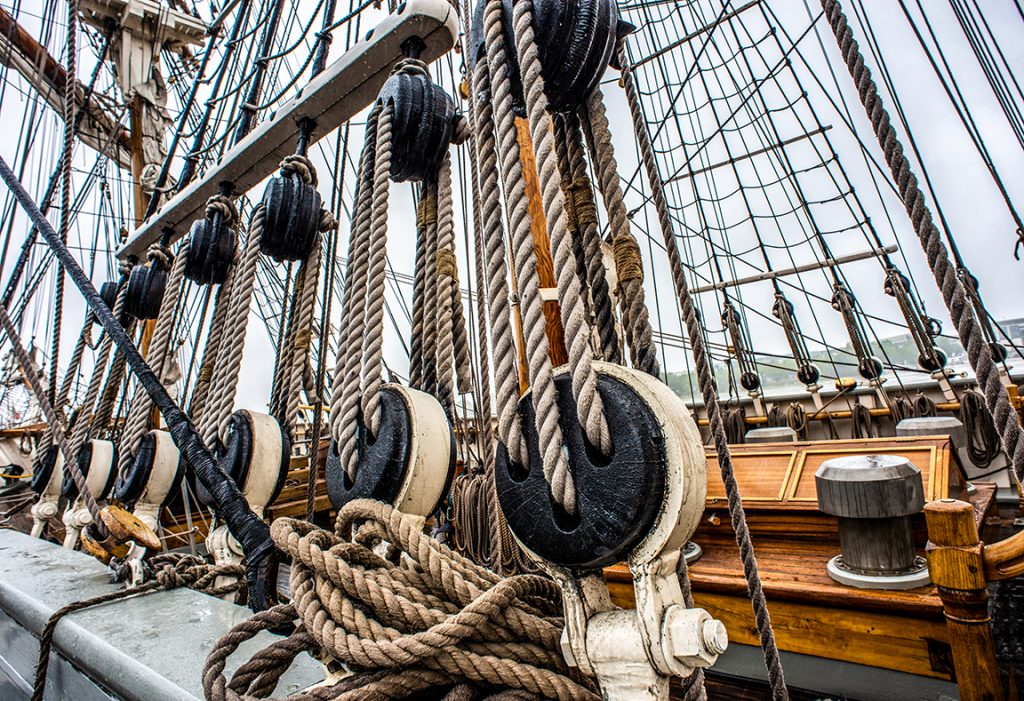
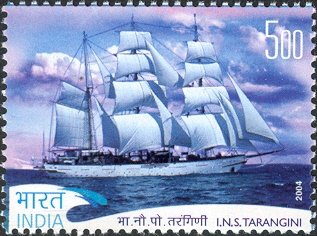
Tarangini is derived from a Hindi word meaning “waves” or “full of waves.” The handsome three-masted barque was commissioned in 1997 as a sail training ship for Indian Navy.
She is square-rigged on the fore and main masts, and fore-and-aft rigged on the mizzen mast closest to the stern, which means she can carry a lot of sail and move along in many different wind conditions.
In Bordeaux, her crew was attired in full dress uniforms that would have made Lord Nelson proud. In fact, she has a sister ship named Lord Nelson, designed by the same architect. That ship has sailed for a British foundation but as I write her future is uncertain.
Poland’s Pride

Like many members of the surviving fleet of tall ships, Dar Pomorza has gone through many hands over the years. She was built in 1909 in Germany as the training ship Prinzess Eitel Friedrich, wife of a Prussian prince.
In 1920 she was taken as war reparations by Great Britain, then brought to France. In 1929 she was purchased by the Polish community of Pomerania as a training ship for the Polish Naval Academy in Gdynia, which in the period between the world wars was part of the Free State of Danzig along with the nearby city of Gdańsk.
In 1934 and 1935 she traveled around the world, including a passage through the Panama Canal, as an assertion of pride by the nation of Poland even as war clouds gathered back home. When the Second World War began, with the first shots fired at Gdańsk, she was interned in neutral Sweden at Stockholm.
After the war she was returned to Poland, now under Soviet suzerainty. With the fall of the Soviet Union, the ship became a museum ship moored in Gdynia.
She has three sister ships, including Statsraad Lehmkuhl, which I wrote about in an earlier blog post.
Russia, Docked
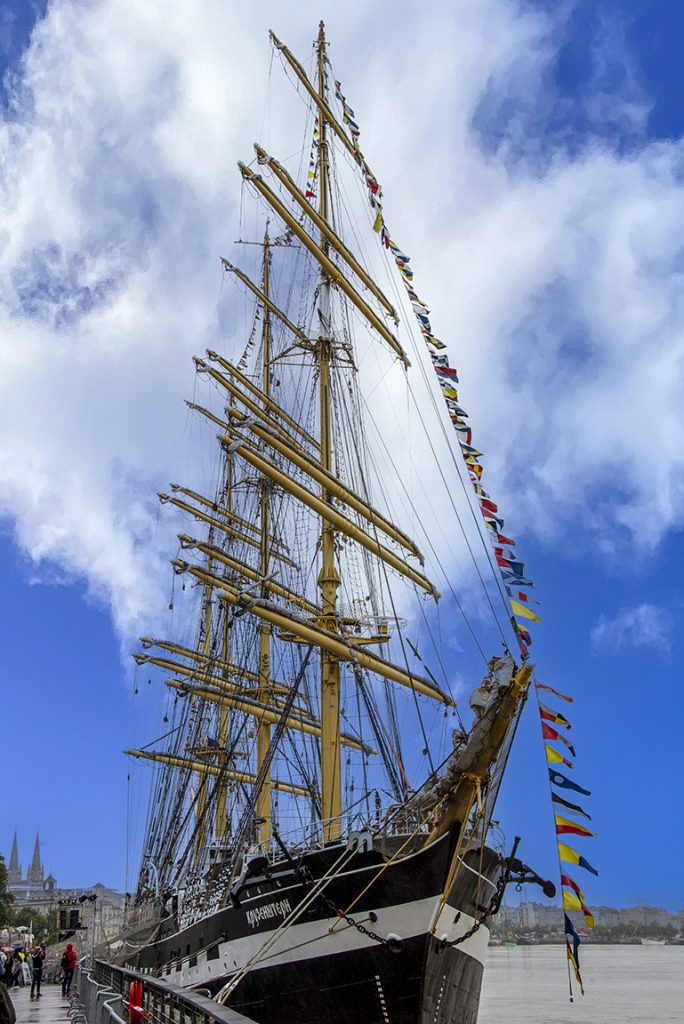
The four-masted barque was built in Germany in 1926 as part of the Flying P-Liners; there are four of these large and fast cargo-carriers still in existence but Kruzenshtern is the last one still sailing.
When she was built in Bremerhaven she was named Padua after the Italian city. After World War II she was surrendered to the Soviet Union as war reparations and renamed after the 19th century explorer Adam Johann von Krusenstern who conducted the first Russian circumnavigation of the globe. He had been born in the Governate of Estonia of the Russian Empire.
As the cargo ship Padua, among her assignments was transporting material to and from South America, and later carrying wheat from Australia.
As Kruzenshtern, the ship’s home port is in the somewhat obscure Russian exclave of Kaliningrad on the Baltic Sea; Kaliningrad was formerly the German port of Königsberg but was not given up by Russia even after the dissolution of the Soviet Union.
I have seen and photographed all four of the surviving Flying P-Liners: Pommern, a museum ship in Mariehamn, Finland; Peking, which spent many years at the South Street Seaport in New York and is now a museum ship in Hamburg, Germany, and Passat, also a museum ship, displayed in Travemünde, Germany.
A Swedish Pleasure Craft
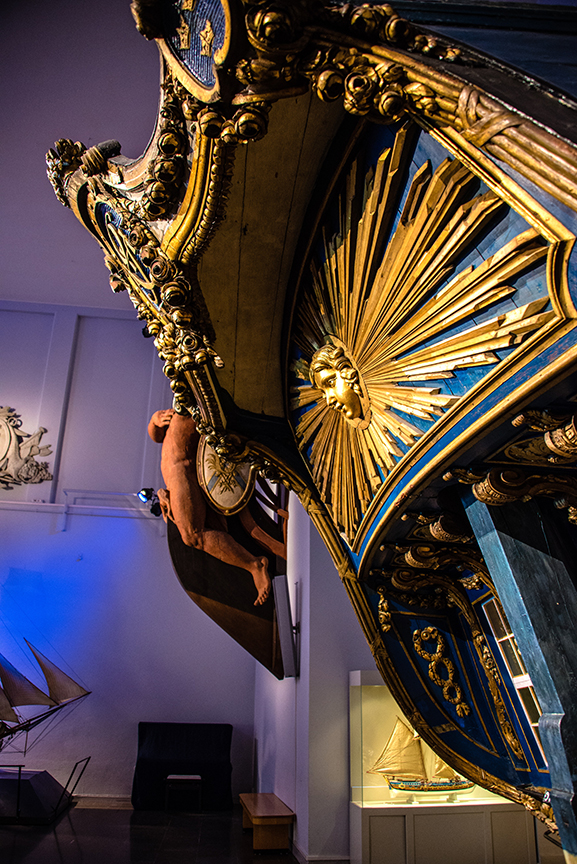
In the immortal words of Mel Brooks, it’s good to be king. Amphion was the personal pleasure craft of King Gustav III of Sweden.
Launched in 1778, the vessel was intended as a royal yacht and headquarters frigate. In Greek mythology, Amphion was the son of Zeus and a patron of the arts.
Her construction preceded the introduction of marine engines that supplemented windpower on most sailing vessels. Instead, the ship included a galley deck that allowed for a complement of oarsmen.
The ship was lavishly decorated and appointed, but a failure as a vessel unable to make much progress with her two masts and she was too heavy to make much use of the 16 pairs of oars.
On her maiden voyage to Stockholm, poor weather conditions left Amphion shipwrecked in the archipelago of Stockholm, and Gustav III was required to come ashore by tender, most unbefitting a royal.
In 1884, Amphion was broken up for firewood, but her figurehead and stern castle were preserved.
A Polynesian Theory

Kon-Tiki is a relatively modern conception of an ancient craft that Norwegian explorer and author Thor Heyerdahl believed might have been used by people from South America to settle Polynesia in pre-Columbian times.
There’s a lot to unpack there.
Heyerdahl from Norway came to Callao, near Lima in Peru to supervise construction of a primitive balsa wood raft with a rudimentary sail.
The book he wrote about his adventure was a major worldwide bestseller, and the documentary he made won an Academy Award in 1951.
Heyerdahl’s trip did indeed establish the possibility that this sort of sailing vessel could have followed currents and winds from Peru to Polynesia.
That said, modern scientists are generally unconvinced that this was the route and method used by the settlers of Polynesia and Hawaii.
But it was a great story, and it is thrill to see the flimsy raft. Not in Peru. Not on one of the islands of Polynesia. But instead in a special museum in Stockholm.
This sort of unexpected connection between disparate places is the reason I travel.
Photos and text copyright Corey Sandler. To obtain copies or otherwise use images, please contact me through my website at www.coreysandler.com


















